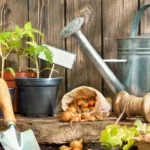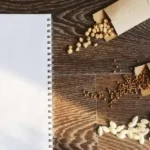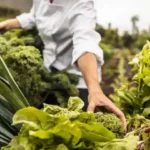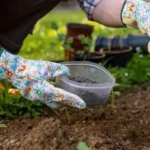When first starting your backyard garden, every beginner vegetable gardener may feel overwhelmed. Fortunately, with the right plan, these worries can quickly transform into excitement by following and understanding some basics to ensure you’ll have a successful and fruitful harvest. From choosing the perfect location to cultivating healthy favorites each season, you will be well on your way to enjoying fresh, homegrown vegetables!
Choose a backyard location with at least 6-8 hours of sunlight and access to a nearby water source. Equip yourself with the proper gardening tools, including gloves, a trowel, and a rake. Opt for beginner-friendly veggies like lettuce, tomatoes, radishes, and peas that are easy to grow. Lastly, establish a growing routine for planting, watering, fertilizing, and harvesting to enjoy your produce year-round.
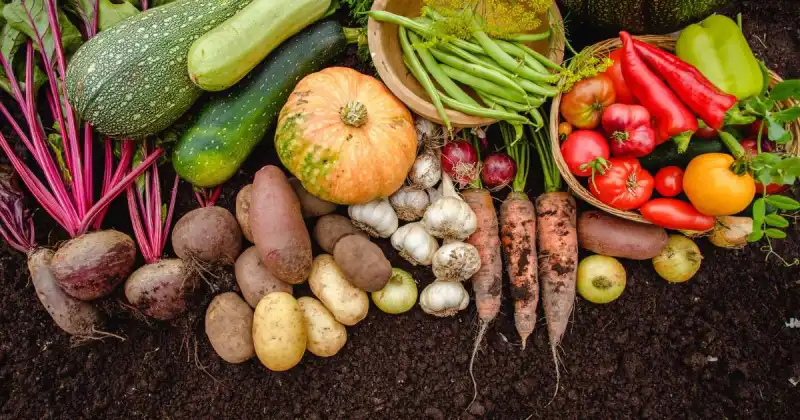
Plenty of practical and effective ways to grow delicious veggies in your backyard exist. In this article, I will walk you through the essentials of location, planting, maintenance, and harvesting, all while keeping things fun and straightforward, just as they should be. Additionally, we’ll cover the significance of sun, soil, and water and how to maximize their impact on your flourishing garden.
I’ll teach everything from choosing the ideal garden spot to mastering a particular care routine while reaping a plentiful harvest with each passing season. So, keep reading, and let’s embark on this exciting adventure together so you can create and enjoy a garden overflowing with fresh, homegrown delights!
Humble Highlights
- Discover the 4 essentials of starting a garden so you can save time and money by developing your veggies like the pros – even if you think you don’t have a green thumb!
- Learn the top 5 most popular vegetables you can grow in your garden today to feed your family and leverage the power of Mother Nature to help you achieve your gardening goals, no matter what region you reside.
- Maintain a healthy and productive home garden with these 6 fundamental steps whether you grow your grub on an entire acre plot in the country or a small urban balcony downtown.
Preparation: Basics Of Starting A Vegetable Garden
Starting a vegetable garden is an exciting endeavor that requires proper preparation to ensure success. Every gardener should adhere to several fundamental steps, especially if they want their green space to consistently develop fresh quality produce with the least labor. These foundational elements include:
- Choosing The Perfect Sunny Spot
- Ensuring Your Garden Is Accessible To A Water Source
- Building A Good Soil Foundation
- Setting Up A Gardening Care Schedule

Let’s review these common successful steps to help you start on the right leaf.
Choosing The Perfect Sunny Spot
Choosing the perfect location for your vegetable garden ensures a bountiful harvest. Why? Because your plants need light to grow and prosper. So, look for a good spot that receives at least six hours of direct, unfiltered afternoon or morning sunlight, has good drainage, and is protected from harsh winds.
It’s wise first to observe your space to figure out where the sun shines and sets and choose vegetables that grow well under the sun’s heat, especially if you live in a warmer region. However, some leafy vegetables like spinach, lettuce, collards, and Swiss chard also enjoy some shaded relief, so it’s best to plan now to avoid any unnecessary hassles later. 1
Accessible To A Water Source
Make sure to plant your vegetables where water sources are abundant or accessible. Along with sunlight and carbon dioxide, plants need water for photosynthesis and to properly uptake nutrients from the soil.

Therefore, ensuring you situate your garden near a viable water source, such as a spigot, well, hose, or rain barrel, is vital. If your garden is far from a water source, remember that carrying water from another location or waiting for rainfall can be a hassle.
Water is the lifeblood of your plants, and knowing how to water correctly makes a difference between full harvests and wilting plants. Remember, without a constant supply, consequences may be underperforming foliage, stunted growth, and even plant death.
Check Lowest Prices On Rain Barrels Now
Building A Good Soil Foundation
Check the soil’s pH level to see if it’s acidic or alkaline, and choose vegetables that can grow in that type of soil. Next, consider potential problems like nearby trees, power lines, or other structures that may unnecessarily shade your plants. Also, ensure any adjacent plants near your garden do not compete with soil nutrients and do not need direct sunlight. 2
You’ll also want to prepare and clear your green area of inevitable weeds that compete with your veggies for water, space, and nutrients. Additionally, weeds can spawn destructive pests and diseases that can decimate your garden, so it’s best to know how to handle these invaders throughout the year.
Setting Up A Gardening Schedule
Both beginning growers and gardening legends agree that organizing a gardening schedule ensures your plants are cared for properly throughout the growing season. This schedule should include planting, watering, fertilizing, and harvesting, among other vital tasks you’ll need to perform to keep your green oasis in top shape.
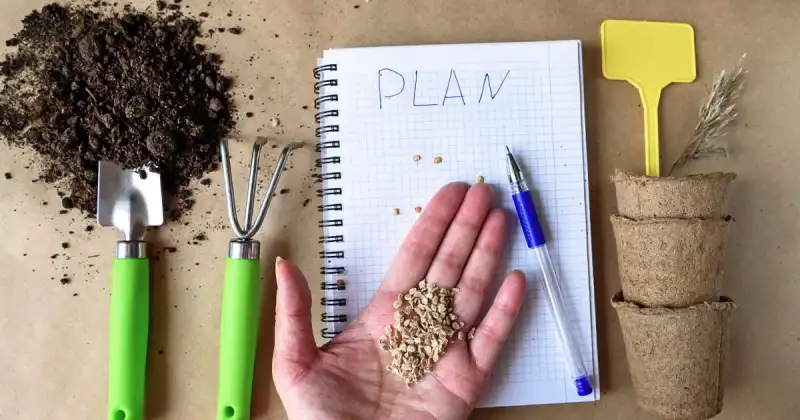
Consider the time you plan to spend in your garden and break down your tasks into bite-sized, manageable chunks. Using a gardening calendar or journal to help you stay organized and on track is an inexpensive and wise decision to keep you on track and organized. If you have limited time due to work or other commitments, allocate specific days or times for tasks such as weeding, watering, and checking for pests or diseases.
Check Lowest Prices On Garden Planners And Log Books Now
By scheduling regular tasks on certain days, you can create an easy-to-remember routine that ensures everything necessary gets accomplished. For instance, you can set aside time for fertilizing your plants every Wednesday. You can also keep your motivation high throughout the season by referring to some of the most inspiring gardening quotes – or create new ones yourself!
Without daily hydration, plants adjust by growing deeper roots that dive deeper into your soil, looking for a quick drink. So not only do your leafy friends become more robust, but you won’t need to worry much when heading out on that mid-summer beach vacation for a few days.
Choose Your Veggies To Grow
When starting a garden, it’s best to grow vegetables that are well-adapted to your climate, are enjoyed by your family, and are easy to grow. The practice of companion planting, where certain vegetables are paired together in the garden for mutual benefit, should also be considered. This time-tested approach leverages the natural advantages of Mother Nature to help you in your gardening efforts.

Check Lowest Prices On Companion Planting Books Now
Tips For Choosing Vegetables
When discovering how to be a good gardener and starting a vegetable patch, I suggest aspiring growers start small and gradually expand their space. Nothing is more disheartening when you take on more than you can handle. Setbacks are bound to occur, and when they do, the disappointment can deflate you faster than a balloon at a push-pin convention. 3
Likewise, as mentioned above, choosing vegetables that you enjoy eating and are easy to grow, such as carrots, cucumbers, lettuce, beans, and tomatoes, is an excellent way to start your operation. In addition, start with easy-to-grow vegetables suitable for your climate and the sunlight your garden receives.
Some vegetables also benefit from companion planting, so keep that in mind when choosing. When planning your garden, consider the space available and the spacing requirements of the vegetables you want to grow. For example, tomatoes and cucumbers need more space than other plants to prevent competition and shading since the leaves of both plants can grow quite densely, creating a shady canopy. Thus it is essential to practice proper spacing between your plants to prevent issues with airflow and shade.
Check Lowest Prices On Heirloom Seed Mixes Now
Sow What? Tips And Tricks For Starting Your Garden
Now, you’re ready to get your hands dirty and grow your vegetables. Although you may not have all the qualities of a backyard gardener right at the beginning, choosing easy, low-maintenance veggies will give you quick results and reward you with a sense of accomplishment.
Remember to gear up with the right tools. The basics are necessary for any backyard gardener, from gloves to shovels and pruning shears. And if you have a more extensive garden, a trusty wheelbarrow or garden cart can save you loads of time and energy.
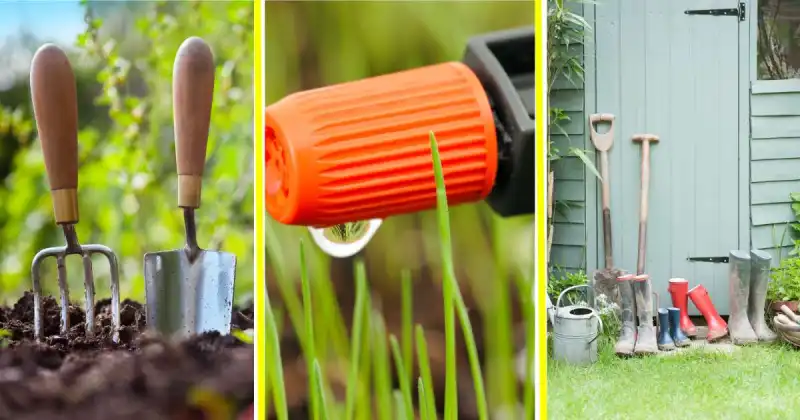
Check Lowest Prices On Garden Wagons Now
Here’s a list of easy-to-grow veggies that even a novice gardener can handle, along with the essential tools you’ll need to succeed. With these tools and veggies, you’ll be well on your way to a bountiful harvest and a newfound love for gardening.
Lettuce
Lettuce is an ideal beginner vegetable for its easy cultivation and rapid maturity. It is a vegetable that can tolerate some frost if you have milder winters in your region.
In addition, lettuce is a relatively undemanding vegetable because it has an extensive temperature range, meaning it can be grown in many climates, with most varieties being frost-tolerant. It is also a wildly productive, nutritious, and versatile vegetable and can be grown in small spaces, making it ideal for novice growers.
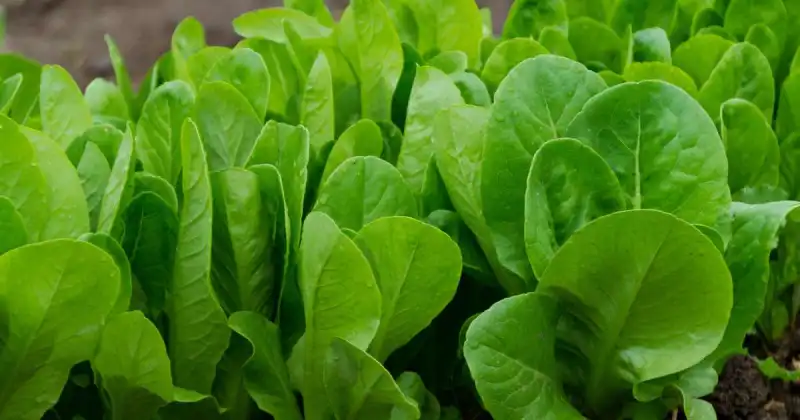
As a beginner, you’ll need a few essential tools for growing lettuce. A garden rake and hoe help prepare the soil, and a hand trowel is ideal for planting tiny seeds like lettuce. You may also need a watering can or garden hose for consistent moisture, especially during dry periods. Finally, it is crucial to remember that lettuce prefers loose, cool, well-draining soil. Adding compost or organic fertilizers can help nourish the soil and improve its structure while keeping it moist.
Check Lowest Prices On Garden Hand Tool Kits Now
Check Lowest Prices On Lettuce Seed Mixes Now
Beets
Beets are a surprisingly low-maintenance vegetable that can be grown quickly in containers or sown directly in the ground. This superfood develops well in different climates and has a shorter growing season, making them perfect for beginner gardeners. They are also productive, and you can eat the tops just like a regular leafy vegetable, making them highly versatile. 4
To grow beets, you will need a few tools to get started. A garden hoe helps create furrows in the soil where you plant your beet seeds. A watering can or garden hose ensures consistent moisture, which is vital for growing healthy beets. Additionally, a garden fork helps loosen the soil around the beet plants to make it easier to harvest them. And because beets are known for their resistance to bolting, they do not require any special tools or techniques to prevent them from going to seed prematurely.
Check Lowest Prices On Watering Cans Now
Check Lowest Prices For Beet Seeds Now
Carrots
Carrots are versatile and productive vegetables grown in various climates throughout the year. And let’s be honest, who doesn’t like carrots? These orange sticks prefer loose and well-draining soil, which can be achieved with the help of a garden trowel and rake for preparing the ground. Plant carrot seeds in succession every few weeks to ensure your garden has a plentiful and continual harvest. Consistent moisture is also crucial, so a watering can or garden hose will come in handy in keeping the soil moist, especially during dry periods.

Check Lowest Prices On Garden Row Covers Now
To prevent common pests like carrot rust flies, consider deploying row covers or companion plants with herbs like rosemary or sage which can help repel this notorious pest. Row covers are a physical barrier preventing insects from laying eggs on the plants, allowing plenty of sunlight and fresh air. Companion planting can also confuse and repel pests with the strong scent of herbs. Using these tools and techniques, beginners can grow a healthy and productive crop of carrots in their home gardens.
Tomatoes
Tomatoes are THE go-to for many seasoned and beginner gardeners and come in a rainbow of colors. Tomatoes are incredibly versatile and are used in a wide variety of dishes. Cherry tomatoes, for example, are a popular choice, as they are easy to grow and can be harvested continuously throughout the season. In addition, cherry tomatoes are ideal for beginners, as they are relatively low-maintenance and can adapt to different growing conditions.
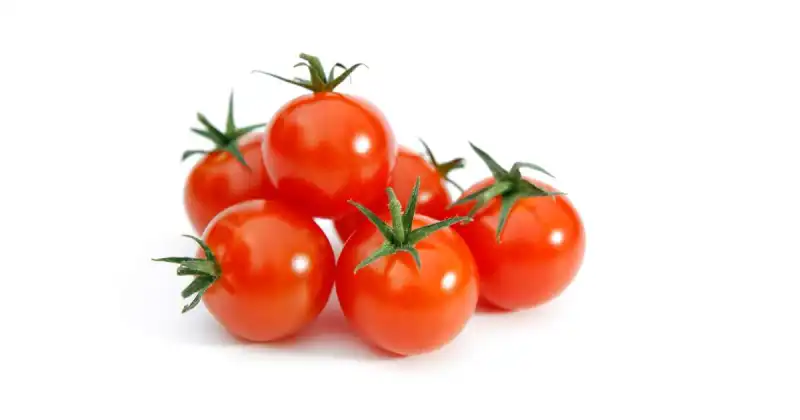
Check Lowest Prices On Cherry Tomato Seeds Now
For growing tomatoes, you will need a sunny location, soil with good drainage, and stakes or cages for support as your plants develop. These necessary supports help prevent the plants from bending or breaking under the tomatoes’ weight and ensure the plants have the proper growing conditions. Gardeners will also need a watering can or garden hose for consistent watering, especially during hot and dry periods.
If you are new to gardening, start with two to four tomato plants, and choose different varieties, such as Roma or cherry.
Check Lowest Prices On Tomato Cages Now
Onions
Onions are incredibly easy to grow in various climates, including spring onions that can grow in a glass of water. To cultivate onions, I suggest using a garden fork to loosen the soil for onion bulbs to mature. A hoe is also helpful to keep weeds at bay and to create a smooth surface for planting. Consistent moisture is essential for onions, so a watering can or garden hose should be helpful, as is a layer of mulch or compost that retains soil moisture, provide necessary nutrients, and helps keep the soil cool.
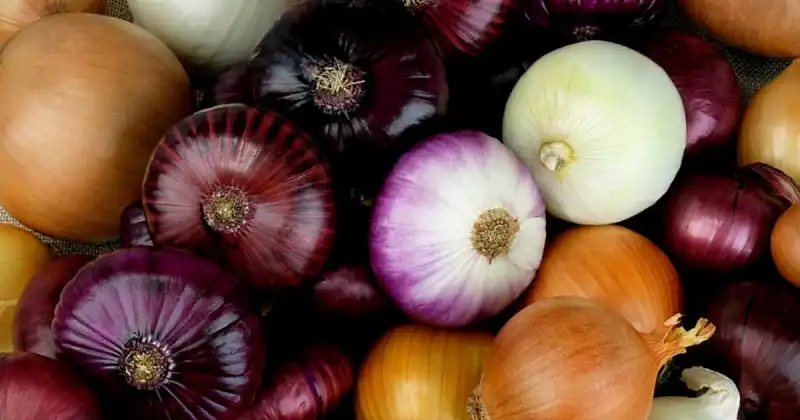
Check Lowest Prices On Garden Forks Now
When planting onion sets, a furrow or trench in the soil can be created using a hand trowel. Ensure your onions sets are evenly spaced out and covered with garden soil. Like carrots, row covers, or companion planting with herbs like chives or marigolds can protect onions from unwanted pests.
Check Lowest Prices On Herb Seed Mixes Now
Here’s a great video resource I found that helps you understand what to expect when creating your garden for the first time. Although you can see some success by winging things, it’s best to do some pre-planning first to reap the full benefit of your plants.
How To Grow Your Vegetables
There are two basic ways to grow vegetables in your home garden: from seeds and pots or containers. The short but concise list for each provides guidance and will help you start your gardening journey quickly. So, let’s roll up our sleeves and dig in!
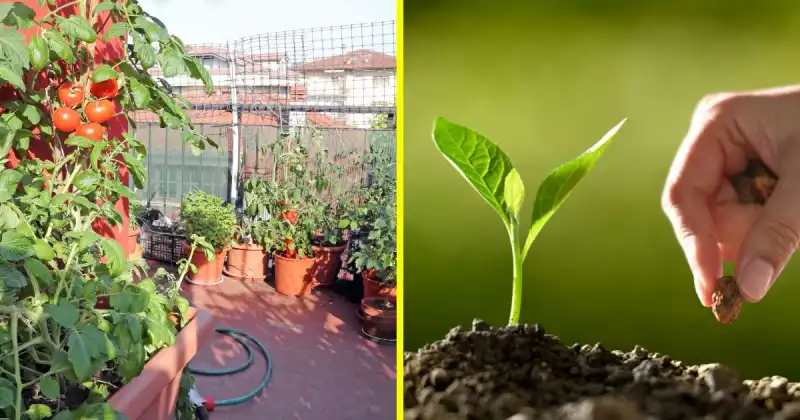
Growing Veggies In Pots Or Containers
- Choose a location with at least 6-8 hours of complete and direct sunlight daily.
- Decide what plants to grow by making a list and finding a reliable planting guide.
- Choose the correct size container with drainage holes.
- Fill the container with quality raised bed mix or potting soil.
- Provide adequate spacing when planting. Don’t overcrowd your vegetables in one container.
- Water the soil, not the plant, to avoid disease, and be sure to water containers as needed. Containers and pots tend to dry out faster than traditional in-ground gardening beds.
- Feed plants with water-soluble organic fertilizers, or, even better, layer organic compost atop the soil two to three weeks before planting or sowing.
- Spend time in the garden daily and take notes on what you planted and when.
Check Lowest Prices On Garden Grow Bags And Pots Now
Growing Veggies From Seeds
- Select the right plant and ensure you have enough seasonal time to grow it from seed.
- Sow seeds at the recommended soil depth detailed on the package and water regularly until they germinate.
- For specific seeds, like particular types of lettuce, exposure to light during germination is needed. The seeds should be covered by soil but nothing else.
- Use water-soluble organic fertilizer such as fish emulsion or liquid seaweed once the plants become established. Read and follow the application directions so you don’t mistakenly over-fertilize.
- Monitor the plants for signs of pests and disease while watering. For a practical and efficient soil moisture test, stick your finger about an inch or so in the soil. If the soil is dry, it’s time to water.
- Harvest your vegetables when they are young and tender. If you wait too long, your crops can become bitter on the vine.
- Spend time in your garden daily to check for pests and meet your plant’s water needs.
- Keeping a journal can help you identify areas for improvement and avoid repeating mistakes in the future.
Check Lowest Prices On Fish Emulsion Fertilizer Now
Remember, planting veggies is just the beginning! To keep your garden thriving, you’ve got to show your plants some love. Like humans, plants, whether fruits or vegetables, also need mindful attention. Maintaining them with the proper techniques and practices and extending your season with a greenhouse helps lead to a flourishing and fruitful garden that will make you proud. 5
Keeping A Healthy Garden: Tips For Preserving Your Veggies
To maintain a healthy, robust, and productive garden, it’s important to keep in mind several key elements, including:
- Conducting A Sun Survey
- Improving The Quality Of Garden Soil
- Creating Garden Beds
- Proper Watering Practices
- The Importance Of Nourishing Your Plants
- Dealing With Bolting Vegetable Plants
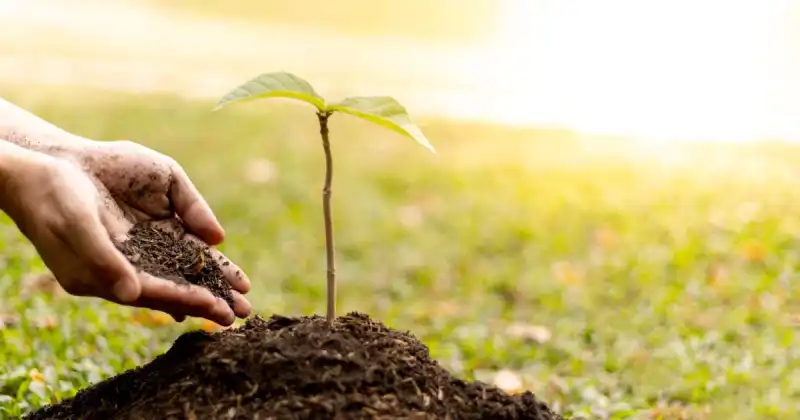
Don’t think you need a large plot of land to achieve your gardening dream. Growing a successful and rewarding vegetable garden can be done in the smallest areas. Creative urban gardeners, for example, maximize every available inch, whether on a balcony, rooftop, or sunny windowsill. In fact, any productive garden only requires a few things, including consistent sunlight, quality soil, and plenty of water.
So, let’s take a more thorough look at each of these factors to help you create the perfect vegetable garden in your neck of the woods.
Let There Be Light – Sunlight That Is
Whether you live in the country or the city, you can conduct a fun sun survey to help you find the best growing spot. Grab a piece of paper and roughly draw your growing area. Don’t worry. No artistic ability is necessary. Draw in all the shadow lines that fall across your space, shading the shadow areas on your paper. Repeat this process four times (at least) during the day at 9:00, 12:00, 3:00, and 6:00 to see how the shadows change. 6
Or, you can observe your garden throughout the day as the sun passes overhead. Whip out your cellphone and snap photos mid-morning, noon, and mid-afternoon because certain plants prefer morning or afternoon sunlight. Be sure to also conduct this exercise during mid-summer and mid-winter, and note which parts of your green space are in the shade and which are in the sun.
Happy Soil Makes Happy Plants
When it comes to gardening, soil quality can make all the difference. Let me say this another way. If your garden produces abundant, tasty, colorful fruits and vegetables each season, your plans reside in nutrient-dense soil: period, end of story.
As a beginning gardener, don’t make the rookie mistake of thinking the plants or seeds you purchase determine your success. Instead, focus on amending your soil, and you’ll improve your yields.

Sandy soil comprises coarse particles and possesses a grainy consistency. However, due to its excellent drainage, it often remains dry, and plants struggle to retain water.
Clay soil, on the other hand, is composed of tiny particles that are tightly packed together, resulting in a dense texture that can be heavy, compacted, and sticky when wet. It’s not surprising, then, that clay soil typically has poor drainage and can quickly become waterlogged, which poses a challenge for growing plants. In addition, because of its compact nature, clay soil has a low oxygen content and can be challenging to work with.
Check Lowest Prices On Soil Test Kits Now
Despite these drawbacks, sandy and clay soils are packed with essential nutrients that benefit your plants. So if you live where these types of soil abound, take heart. There are ways to improve them.
For example, adding organic matter such as compost or aged manure can help sandy soil retain moisture and nutrients. Discovering how to mulch your vegetable garden correctly can help contribute nutrients and protect your crops.
Likewise, incorporating rich organic matter enhances clay soil’s overall quality and structure. Adding coarse sand, perlite, or vermiculite to clay soil can help loosen it up and improve drainage. Sure, working on these amendments can take a little time and effort, but the resulting harvest is well worth it.
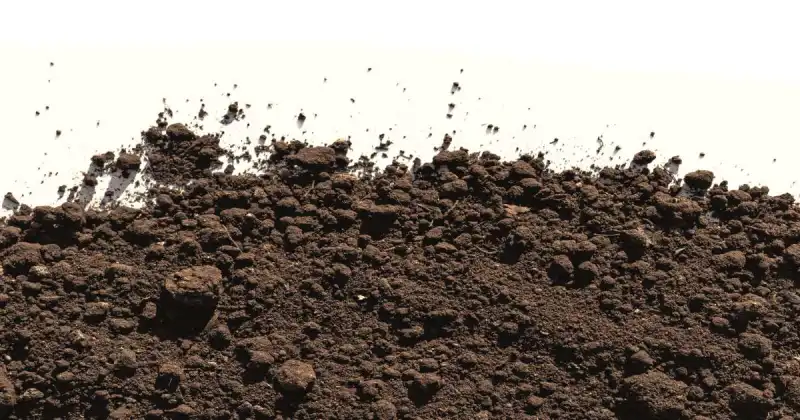
It would also be wise to start a backyard compost pile or invest in a compost tumbler, so you’ll have plenty of fresh, organic, mature humus (compost) to add to that clay soil continuously.
Loamy soil, on the other hand, is the gold standard for gardening. It comprises a balanced mixture of sand, silt, and clay that retains moisture and nutrients while allowing for proper drainage and air circulation. Loamy soil is typically dark colored and has a crumbly texture that is easy to work with.
Check Lowest Prices For Garden Soil Now
If you’re lucky enough to have loamy soil in your garden, you’re already ahead of the game. But even if you don’t have ideal soil yet, with a bit of work and the proper amendments, you can create a thriving garden that will produce bountiful crops in a much shorter time than you realize.
Because hindsight is always 20/20, here’s a great video detailing 10 tips you should consider BEFORE starting your garden. Of course, if you already have an established growing space, there are some additional golden nuggets of wisdom that you can apply as well.
Make Your Bed
Creating your garden beds and determining the right size to feed you and your family are two of the first steps to take when preparing a garden. Two popular techniques for creating garden beds are double digging and raised beds. Double digging involves removing the top layer of soil and loosening the subsoil below to make a deep and loose soil bed perfect for root growth and expansion.
On the other hand, raised beds are soil-filled beds elevated above the ground. As a result, raised beds offer excellent drainage, making them an ideal option for gardeners dealing with poor soil conditions.
Your gardening goals, regional weather, and climate all may play a part in helping you determine how to start your garden. Take the proper time to research each type of vegetable gardening and make the best decision.
Check Lowest Prices On Raised Garden Beds Now
If you have lousy soil like clay, don’t worry. As previously mentioned, there are great ways to improve it over time. In addition, adding amendments like compost and fertilizer can help enrich the soil making it more suitable for planting. Remember, keeping an eye on your garden’s soil is a top priority for any grower.
Water
If you want to give your plants a treat, consider using rainwater. Your plants will love it and reward you with healthy growth. But how do you know when it is time to water your plants? One age-old technique is to stick your index finger about an inch into the soil to the depth of your second knuckle. Then, if it feels dry, it’s time to hydrate. 7
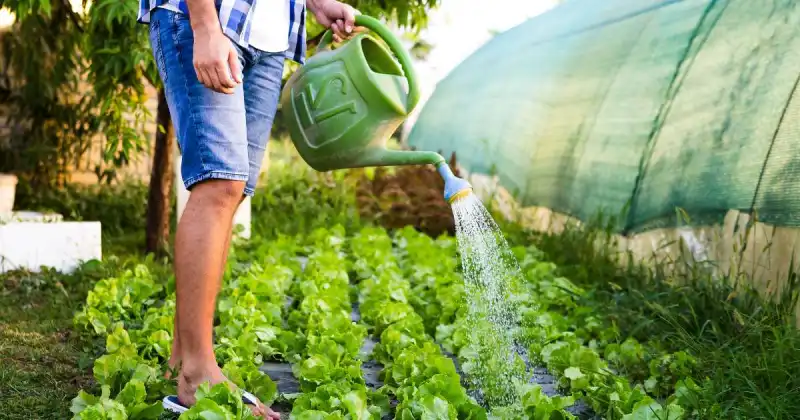
Another method is to check the leaves of your plants. If they appear wilted or are drooping, it’s a tell-tale sign that they need water. However, be careful not to water too much to avoid waterlogged roots and plant death.
Watering your plants at the right time of day is also essential. The absolute best time to water your garden is in the morning when the sun is not as intense and cooler temperatures reign. Morning watering allows moisture to soak into the soil and become absorbed by the roots of your plants before the heat of the day evaporates it. The worst time to water is late afternoon into evening, as the excess moisture can lead to fungal growth and disease, which you would like to avoid.
If you want watering tools, consider investing in a soaker hose or drip irrigation system. These tools deliver water directly to the soil, reducing water waste, minimizing disease risk, and saving you time. In addition, drip irrigation systems are surprisingly easy to set up. And because some kits come with a timer, you can automate the entire process, freeing up your time to pick those succulent tomatoes.
Check Lowest Prices On Drip Irrigation Kits Now
Importance Of Nourishing Your Plants
Giving your plants the proper nutrients is like giving your body the right vitamins and minerals. Nutrients like nitrogen, phosphorus, potassium, calcium, and magnesium are essential for your plants to grow strong and healthy and protect them from damaging pests and diseases. 8

You can nourish your plants by adding organic matter such as compost or aged (well-rotted) manure to your soil or using fertilizers specifically designed for vegetables. But don’t forget to follow the label’s instructions and not overdo it. And don’t forget to give your plants enough water to help them absorb all the necessary nutrients.
Dealing With Bolting Vegetables
When a vegetable plant suddenly exhibits upward growth, with a singular, woody stalk and few leaves, it is a sure sign of bolting. Bolting refers to the plant’s shift from vegetative to reproductive growth, which leads to the production of flowers and seeds and a slowdown in edible vegetative growth.
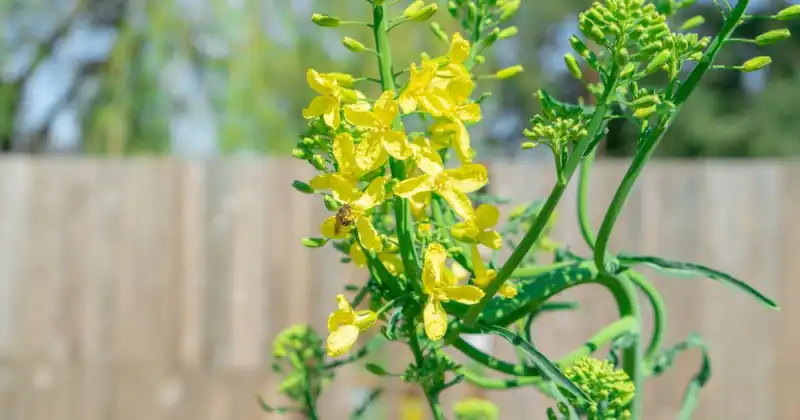
To decrease the likelihood of premature bolting in your backyard vegetables, it is best to harvest the edible parts before the quality deteriorates and cut off the flower stalk to redirect the plant’s energy. Additionally, harvesting certain vegetables’ leaves can encourage them to produce more.
It may not always work, but preventing or even postponing bolting is possible by choosing the suitable vegetable varieties for your climate, planting at the right time of the season, providing adequate water, and protecting plants from extreme heat or sunlight. 9
Benefits Of Starting A Vegetable Garden
There are several benefits of starting a vegetable garden, including:
- Food Independence
- Organic Growing Means No Harsh Chemicals Or Pesticides
- Helps Save Money
- Developing New Skills
- Relieves Stress And Provides Exercise
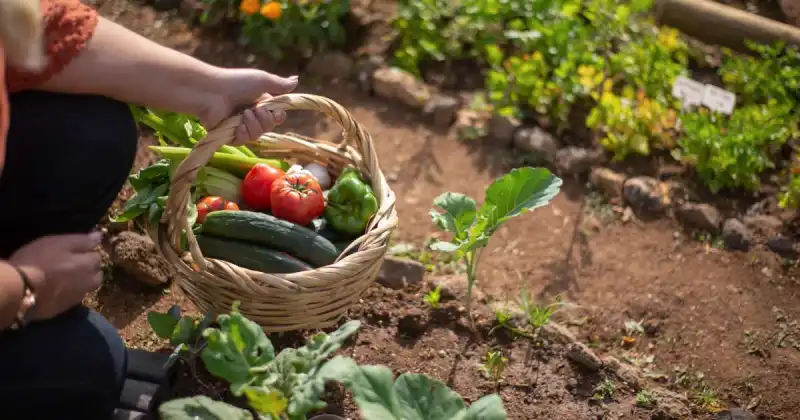
Why Vegetable Gardening Is A Great Hobby
Vegetable gardening is a fantastic hobby that offers numerous benefits. Firstly, growing your grub provides access to fresh and healthy produce from the comfort and convenience of your backyard, rooftop, balcony, windowsill, or wherever you decide to set up shop. You can cultivate your vegetables without worrying about harmful chemicals and enjoy the fresh taste of your homegrown harvest. Vegetable gardening can also help you save money on groceries in the long run. 10
Additionally, gardening offers an opportunity to learn new skills and gain valuable and practical knowledge. Not only is it an enjoyable and therapeutic activity that can relieve stress, but it also promotes physical activity and spending time outdoors.
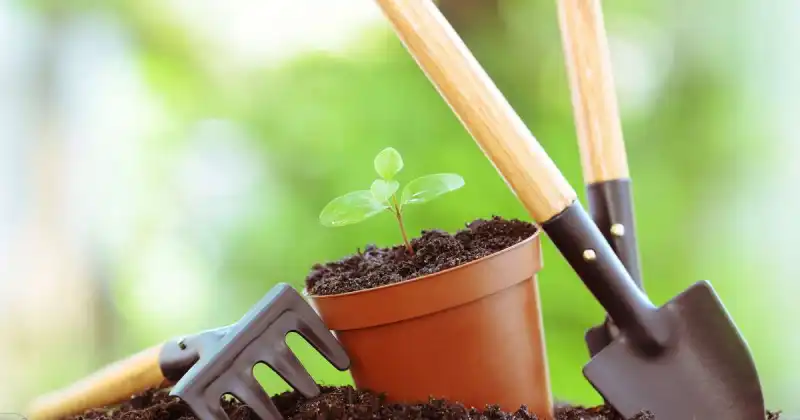
Whether you have a small urban balcony or a large backyard, vegetable gardening is a great way to connect with Mother Nature while experiencing the satisfaction of growing your food.
Benefits Of Growing Your Vegetables
Growing your vegetables can offer various benefits for your health and lifestyle. Firstly, it can help improve your overall health by providing access to fresh, nutrient-dense produce. Additionally, as mentioned above, it can help save you money on groceries by cutting down on trips to the grocery store and reducing the need to purchase expensive organic produce.
Check Lowest Prices On Gardening Books Now
Growing your vegetables is also eco-friendly as it helps the environment by reducing the carbon footprint from commercial transportation. Gardening is also an effective and enjoyable workout promoting physical activity and outdoor time. Lastly, growing your vegetables is a sustainable way to produce healthy food, helping to minimize waste by allowing you to use every part of the plant, whether on your plate or in your compost bin.
Conclusion
Starting a vegetable garden can be a rewarding and fun experience that requires proper preparation, choosing the best vegetables for you and your family, and following basic guidelines for planting care and maintenance. Choosing a sunny spot, having easy access to water, and creating a good soil foundation are all factors that will help you on your way to creating a thriving garden you’ll be proud to call your own.
It’s also important to grow what you eat. Some popular vegetable favorites that are easy to grow include lettuce, beets, carrots, tomatoes, and onions.
Whether you grow your veggies on a full acre in the country or have a few small pots on a terrace, with the right tools and patience, you can grow fresh and delicious vegetables right at home.
So, what are you waiting for? With these easy tools and techniques, you can enjoy cultivating your productive crops throughout the season.
So, get your hands dirty and start your vegetable garden today!
What essential step mentioned above stood out most to you? We’d love to know and get your feedback. So make sure to drop us a line in the comment section below!
SOURCES
- Almanac – Vegetable Gardening For Beginners: The Complete Guide
- University Of Wisconsin-Madison, Division Of Extension – Beginning Vegetable Garden Basics: Site Selection And Soil Preparation
- Royal Horticultural Society – Beginners Guide To Gardening
- North Carolina State University, Extension – Vegetable Gardening: A Beginner’s Guide
- Cornell University, Cooperative Extension – Vegetable Gardening For Beginners
- Wikipedia – Gardening
- Plantly.io – Is It Good To Water The Plants With Rainwater
- Environmental Evidence – What Are The Health And Well-Being Impacts Of Community Gardening For Adults And Children: A Mixed Method Systematic Review Protocol
- National Geographic – Photosynthesis
- ASHS Journals – The Garden As Art, Hobby, And The Good Life


